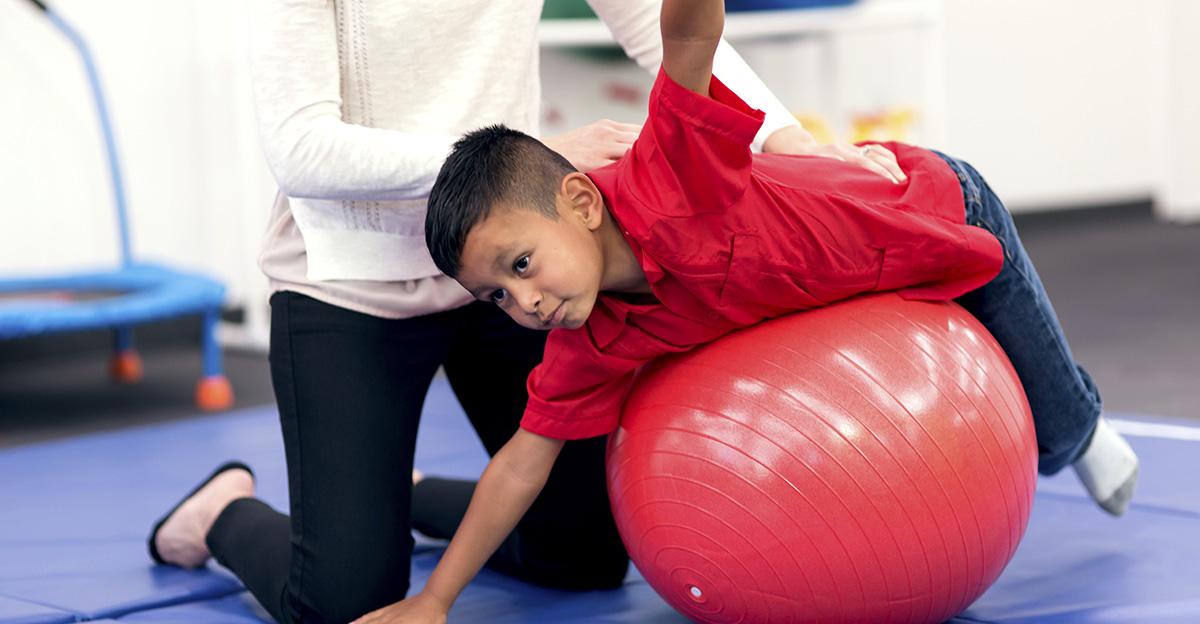Using tools to support the core as well as the upper body and fine motor skills can greatly enhance not only the lives of those treated, but also the scope of one’s physical therapy practice. Whether you are working with children or adults, integrating fine motor and large motor activities can be highly beneficial. It’s been a traditional thought that a physical therapist will concentrate on large motor movement. Yet as the level of education has increased and clients and students have varying needs, it is necessary to integrate large and small motor abilities to meet an individual’s particular needs. Read here and see how finding ways to combine fine and gross motor skills can highly benefit children and adults.
2 Methods for Integrating Fine and Gross Motor Activities
Use the Core
Lets start with the core. There are multiple ways to bring the core and large motor skills to the forefront. Using a dynamic balance tool such as an adapted seat, balance seat, balance stone or a ball chair can bring awareness to the core. By using one of these tools, a student will have to engage the body along with the brain. As the core muscles engage, a sense of heightened alertness can occur. Sitting on a dynamic surface activates the abdominals, back, buttocks, hamstrings, quads and obliques.
Using air is particularly beneficial as the subtle movement and buoyancy creates just a bit of a feeling of being “off center”. This then encourages muscle contraction and not only better focus, but better overall posture as well. Of course, these tools can be used by a therapist for other large motor activities such as exercise, developmental positions, and even as a yoga accessory.
Use the Hands
Fine Motor work can often be seen as heavy handwork. Using the fine motor muscles in the hands will also engage the forearm, shoulder, neck, jaw and core. Think of kneading dough. A body roll can be great to warm up the hands. One therapist favorite tool for engaging the hands is putty! Putty can be used alone somewhat like a stress ball, but it can also be used to roll out snakes, form letters, create mazes, shape animals and create art. Using putty tools can also enhance the experience. Putty provides heavy handwork and works with not only fine motor muscles and intrinsic hand control, but also hand, arm, shoulder, and neck muscles. Try using putty on a flat surface such as desk, on a wall or on the floor to get different muscles involved and encourage a full body workout.
More Blogs About Fine and Gross Motor Skills
Some therapists like to combine both dynamic core work and fine motor work to get the most out of a session but also to provide real-life practice. Having a student sit on a dynamic surface while working with putty, can provide a heavy workout AND involve nearly every muscle in their body resulting in a more engaged student. Having a choice of dynamic seating options and putty tools allows for a variety of activities. In addition, spending just a few minutes preparing the body with sensory tools like these before focusing on curriculum makes for happier and more focused students!
Read more about the tips and tools available for students with special needs. You’ll find new ideas and inspiration to make school a great place for every student.






Leave a Reply